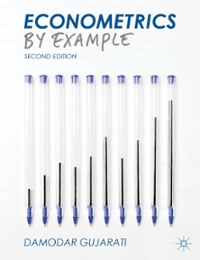Question
Homer's possible production plans in the Homer Zone: If Homer produces this many units of Bread: Then Homer has enough resources left over to make
Homer's possible production plans in the Homer Zone:
| If Homer produces this many units of Bread: | Then Homer has enough resources left over to make this many units of Beer |
| 12 | 0 |
| 10 | 2 |
| 8 | 4 |
| 6 | 6 |
| 4 | 8 |
| 2 | 10 |
| 0 | 12 |
Now, Homer has a neighbor on a nearby island. His name is Ned. Ned faces the same trade-off choice between Bread and Beer. Ned's Production Possibilities, however, are different. Ned has different skills (technology) and different quantities of resources, so his possibilities are different. Ned's production possibilities include:
| If NED produces this many units of Bread: | Then NED has enough resources left over to make this many units of Beer |
| 18 | 0 |
| 15 | 6 |
| 12 | 12 |
| 9 | 18 |
| 6 | 24 |
| 3 | 30 |
| 0 | 36 |
The Challenge:
Your challenge is to help Homer and Ned live the best possible life they can - which in this case means having as much beer and bread as possible. (doesn't it always!)
Assumptions you may make for purposes of answering the questions:
- Production possibilities curves are linear in other words, the PPF for each is a straight line, not a bowed-out curve. This means that the trade-off between bread and beer (the opportunity costs) for each, Homer and Ned, stay the same regardless of where they are producing on their respective PPCs
- Initially, Homer and Ned only produce for their own individual consumption. In other words, Homer consumes what Homer produces and Ned consumes what Ned produces.
- No stealing or giving of gifts. In an effort to improve Homer's well-being, we are ruling out the possibility of theft from Ned (Ned has a big shotgun!) or of a gift (Ned isn't really that nice).
Questions:
- What is Homer's opportunity cost of producing 1 unit of beer? (give a numeric answer using one decimal place and assume it is in "units of bread")
- What is Ned's opportunity cost of producing 1 unit of beer? (give a numeric answer using one decimal place and assume it is in "units of bread")
- Who has an absolute advantage in the production of bread? Homer, Ned, or neither? (enter only one word)
- Homer wants to produce 6 units of bread and 8 units of beer. Is this production plan efficient, inefficient, or impossible? ( just one-word answer)
- Suppose Ned plans to produce 14 units of bread and 14 units of beer. Is this point on, above, or below the PPF curve? (just one word)
- Who has the comparative advantage in producing bread? Homer, Ned, or neither? (just enter one word)
- Homer decides to produce 7 units of bread, consume 6 of them, and offer to trade the 7th bread to Ned for some beer. What is the minimum amount of beer Homer needs to get from Ned to be at least as well off as Homer was before the trade? (numeric answer with one decimal place)
- Ned is considering Homer's trade offer. Homer has proposed making 7 units of bread, keeping 6, and giving 1 unit to Ned in return for some beer. What is the maximum amount of beer Ned would be willing to "pay" for this unit of bread? (numeric answer with 1 decimal place)
Step by Step Solution
There are 3 Steps involved in it
Step: 1

Get Instant Access to Expert-Tailored Solutions
See step-by-step solutions with expert insights and AI powered tools for academic success
Step: 2

Step: 3

Ace Your Homework with AI
Get the answers you need in no time with our AI-driven, step-by-step assistance
Get Started


